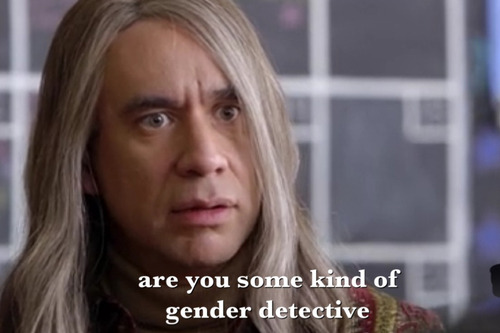
Playing with gender is a common theme in IFC’s hit show, Portlandia
The very nature of Portlandia leads it to be more experimental with gender relations and representation on the show. Being set in a progressive town like Portland, Oregon, the show is bound to reference gender frequently, and it does just that. One prominent example of gender being referened repeatedly is through the show’s recurring feminist bookstore bit, where Armisen and Brownstein play two women selling third-wave feminist literature. Through dialogue in these scenes, gender issues are referenced a lot. Furthermore, the fact that Armisen, a biological male, is dressed as a female sheds light on the trans community. Brownstein also dresses as a man multiple times over the course of the show.
As such, not only male and female are represented, but so are many other gender identities in certain bits. The transgender community also has decent representation in the show, as mentioned above. However, the majority of the scenes take place with exclusively cisgender men and women. From the episodes I watched, it does not appear that men or women received notably more screen time; most of the screen time is consumed by the two main actors (Fred Armisen and Carrie Brownstein) and the characters they happen to portray in a given scene.
The show does a good job of giving each gender agency and power. Sure, there are some scenes in which a given character seems irrelevant or powerless, but on the net it evens out. Male characters are oftentimes portrayed in a manner uncommon in mass media today: as sensitive beings with a desire to from non-superficial relationships. Armisen even gets his nails painted in certain scenes, highlighting gender performativity in such scenes. Women are also portrayed as less indecisive and more powerful on the show, but more work could still be done on this. The show does have a decent minority population, but these characters are often supplemental and temporary (as are about all characters on the show to be fair). Since Armisen an Brownstein are the main characters in each sketch, they take up most of the time as white people.
Overall, the show does a good job of representing a wide range of genders and highlighting the problems with a simple male-female dichotomy. Men and women are considered to be essentially equal, and the show does a good job of putting forth a model for shows going forward on how to approach these issues.

Comments are closed.